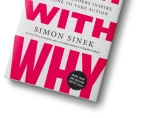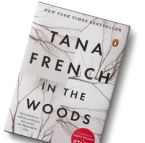
Writing romance is like cooking comfort food. Fans expect warmth, spice, and happy endings. But “romance genre” is not one flavor; there are many types of romance books. Each romance genre characteristic and trope turns a story into a fresh experience.
If you’re an author or storyteller, understanding types of romance tropes, types of romance in relationships, and subgenres like contemporary romance or dark romance books can guide your creative path and help readers find your book.
Let’s explore the best type of romance books for adults—from light and loving to intense and edgy. We’ll cover romance genre examples, subgenres, and why readers love each one. By the end, you’ll know which trope or subgenre fits your voice and what to write next.
Contemporary Romance: Real Love, Real Lives
What it is
This type of romance book is set in today’s world with modern settings, jobs, and lifestyles. Often, families, friends, and workplaces matter.
Romance characteristics
Realistic dialogue. Emotional honesty. Relatable characters. Often light, sometimes spicy.
Why it sells
Readers connect easily. It reflects their lives. Top sellers like Emily Henry’s Beach Read and Book Lovers grew via BookTok buzz for their honest, witty tone and real emotional stakes.
Popular tropes inside it
- Friends to Lovers
- Enemies to Lovers
- Forced Proximity
- Fake Dating
Best for writers who like
Modern themes for this type of romance book include workplace romance, small-town love, and playful banter.
Romance Begins With the Right Words
Got a swoon-worthy story in your heart but unsure how to begin? Our romance ghostwriters bring your passion to life—beautifully.
Hire a Romance GhostwriterEnemies to Lovers & Friends to Lovers: Strong Emotional Arcs
These types of romance books are among the most beloved types of romance book genre examples and tropes.
Enemies to Lovers
Two people who clash hard at first, but slowly discover they care. Tension leads to heat. Classic in workplace romances or rivals.
Friends to Lovers
People who know each other deeply and slowly recognize love. Offers emotional depth and nostalgia.
Why they work
They deliver emotional payoff. Readers enjoy the tension and slow reveal. They feel earned.
Subtropes
- Grumpy vs. Sunshine (one moody, one cheerful) from Ripped Bodice, praise
- Slow Burn—long build-up, deep satisfaction at the end.
Forced Proximity & Fake Dating – Playful, Fun, and Tension-Rich
Forced Proximity
Plot forces characters to stay close—road trip, stuck in elevator, sudden roommates. Boundaries blur, sparks fly.
Fake Dating / Fake Relationship
A pretend romance for practical reasons. But of course feelings happen. It’s a rom-com staple.
Why they’re popular
They produce natural tension. Readers enjoy the sexual frustration and emotional misdirection.
Real reactions
Readers on Reddit often list forced proximity and fake relationship as favorite tropes. Stories like “there’s only one bed” always get love.
Every Kiss. Every Conflict. Sharpened.
Your manuscript deserves more than spellcheck. Let our editors enhance the emotional beats, character arcs, and storytelling.
Get Romance EditingSecond-Chance Romance & Forbidden Love – Emotional Depth and High Stakes
Second Chance
Former lovers separated by life choices or misunderstandings reunite. Redemption, regret, and hopeful healing.
Forbidden / Impossible Love
Society, family, or even time itself stands in the way. Think Romeo and Juliet or time-travel lovers.
Why they resonate
These stories often reflect real-life longing. Readers root for love despite obstacles.
Sub crossover
Combining forbidden love with enemies to lovers or second chance raises tension even more.
Dark Romance Books & Psychological Romantic Suspense
What “dark romance” means
Stories that blend romance with emotional intensity. Themes may include trauma, power dynamics, obsession, or moral ambiguity.
Subgenres
- Romantic Suspense: Thrills meet desire. Danger heightens connection. Think spies or witness protection.
- Psychological Thriller Romance: Emotional manipulation, internal conflict, trust issues.
Cultural caution
Recent concerns note that some dark romance normalizes toxic behavior. Many readers ask for content warnings and critical awareness
Best for
Writers who explore shadowed characters, intense tension, or raw emotional truth.
From Plot to Paperback
We take your romance novel from draft to global bookstores—print-ready, ISBN-secured, and Amazon-approved.
Start Publishing Your RomanceParanormal, Fantasy & Historical Romance
Paranormal Romance
Includes vampires, shapeshifters, witches, time travel—a mix of mystery and love. It’s one of the fastest-growing romance subgenres
Historical / Regency Romance
Domestic settings of past eras. Think balls, letters, social constraints—Georgette Heyer and Three Weeks with Lady X set the tone for this elegant genre.
Why they endure
Escapism, lush world-building, and emotional discovery rooted in setting.
Romance Genre Characteristics: Which Type Should You Write?
To pick your story’s path, think:
- What tone do you write best? Funny? Emotional? Edgy?
- What setting inspires you? Modern city, magical realm, Regency mansion?
- What emotional journey do you want readers to take? Light and warm or intense and transformative?
Here’s a quick trope/subgenre map:
| Trope/Subgenre | Tone & Examples |
|---|---|
| Contemporary Romance | Book Lovers, relationships in real life |
| Enemies → Lovers | Workplace tension, misunderstandings resolve |
| Friends → Lovers | Emotional, nostalgic, deeper connection |
| Forced Proximity / Fake Dating | Rom-com feel, playful, get-close-and-fall |
| Second Chance & Forbidden | Emotional stakes, redemption, longing |
| Dark Romance / Romantic Suspense | Intense, psychological, morally complex |
| Paranormal / Fantasy / Historical | Fantasy worlds or past eras add magic |
Because Every Great Romance Needs Readers
We help your love story shine with marketing campaigns that reach hearts—Amazon visibility, PR buzz, and social media magic.
Promote Your Romance BookWriting Tips for These Romance Tropes
- Start with a strong hook: Introduce tension or contrast early.
- Keep characters active: They make choices.
- Use pacing consciously: Slow burn for emotional build, faster arcs for suspense.
- Balance expectation and surprise: Tropes are familiar—but fresh twists keep them interesting.
- Respect all readers: Especially in dark romance, signal mature themes and consent.
Cultural Flavor & Contemporary Trends
- Romance readers today want diversity and inclusion. Books featuring queer couples, different ethnicities, age gaps, and body types are in demand.
- On BookTok, romance trimmed to tropes (like enemies to lovers) and series recommendations are trending
- Fan fiction origin stories, like Dramione-inspired novels, are becoming published hits in romantasy—a blend of romance and fantasy rooted in fandom culture
These trends show readers embrace emotional resonance—even if the world around the romance shifts.
Final Thoughts on Type of Romance Books
Romance is emotional alchemy. Different types of romance books give a blend of expectation, emotional rise, tension, and heartfelt payoff. Whether you lean toward sweet contemporary romance, the thrill of dark suspense, or whimsical paranormal love, there’s a genre and trope that matches your voice.
When planning your next romance novel, ask:
- What emotional experience do I want to deliver?
- Which tropes do I enjoy reading—and can I add a twist?
- Who is my reader—and what journey will satisfy them?
Your story has the power to heal, delight, and inspire. Pick your trope, build your characters, and write the kind of romance that once made you daydream—and that readers will keep rereading.






























